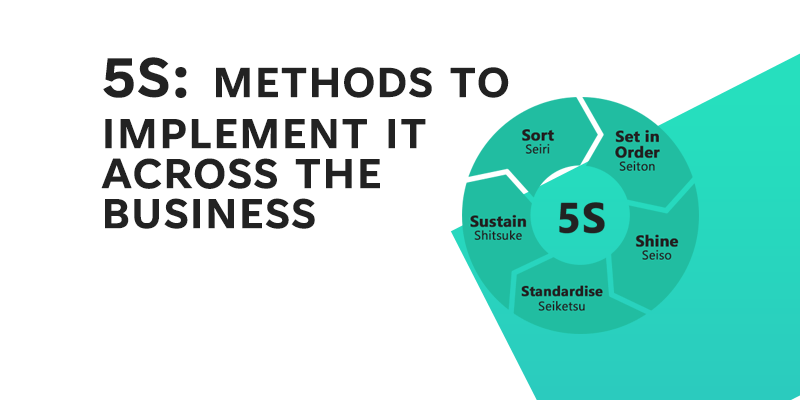Just-in-Time Manufacturing is a production strategy that has gained popularity in recent years due to its ability to increase efficiency, reduce waste, and lower inventory costs. It is a system that emphasises the production of goods in response to, rather than anticipation of, customer demand.
JIT Manufacturing, which produces goods only when they are needed, can help businesses save money by reducing the amount of inventory they need to store and lowering the costs associated with carrying excess stock.
In this beginner’s guide, we’ll provide an overview of JIT Manufacturing, discuss its benefits and challenges, and offer some pointers on how to implement it in your organisation. Understanding the fundamentals of JIT Manufacturing can help you streamline your operations and improve your bottom line, whether you’re a small business owner or a production manager at a large corporation.
Table of Contents
What is Just-In-Time (JIT) Manufacturing
JIT Manufacturing is a production strategy that aims to produce goods only when they are needed and in the exact quantity needed. JIT Manufacturing aims to reduce waste by reducing inventory levels and only producing goods in response to customer demand.
Goods are produced in traditional manufacturing systems in anticipation of future demand based on production forecasts or sales projections. This approach frequently results in excess inventory and increased costs associated with inventory storage, management, and maintenance.
JIT Manufacturing, on the other hand, is a pull-based system that is driven by customer demand. Goods are only manufactured when customers order them, and production begins only in response to customer demand. By producing goods only when they are needed, this approach helps to reduce waste and inventory costs.
Businesses that use JIT Manufacturing must carefully manage their supply chain to ensure that all components and materials arrive just in time for use in production. This necessitates close collaboration between suppliers and manufacturers, as well as a strong emphasis on quality control and process improvement.

Businesses can reduce lead times, improve production efficiency, and lower inventory costs by producing goods only when they are needed. Furthermore, JIT Manufacturing enables businesses to respond quickly to changes in customer demand and market conditions, increasing their agility and competitiveness in today’s fast-paced and dynamic marketplace.
Overall, JIT Manufacturing is a production strategy that emphasises producing goods only when and in the exact quantity required. Businesses can improve their efficiency and competitiveness in the marketplace by reducing waste and inventory costs.
Benefits of Just-in-time Manufacturing
JIT Manufacturing can provide several advantages to businesses that use this production strategy. Among the many advantages are:
Reduction of waste: By producing goods only when they are needed and in the exact quantity required, JIT Manufacturing can help reduce waste in the production process. This includes waste from excess inventory, overproduction, and faulty products. Businesses can cut costs and improve efficiency by reducing waste.
Lower inventory costs: By producing goods only when they are needed, JIT Manufacturing can help reduce inventory costs. This eliminates the need for businesses to keep large amounts of inventory on hand, which can be expensive to manage and maintain. Businesses can improve their financial performance and free up capital by lowering inventory costs.
Improved efficiency: JIT Manufacturing can improve efficiency by reducing lead times and eliminating non-value-added activities in the production process. This can result in shorter production times, higher quality, and lower costs. Businesses can become more competitive in the marketplace by improving efficiency.
Companies that have successfully implemented JIT Manufacturing include the following:
Toyota: Perhaps the most well-known example of a company that has successfully implemented JIT Manufacturing is Toyota. Toyota’s production system, known as the Toyota Production System (TPS), is based on JIT Manufacturing principles and has been credited with helping Toyota become one of the world’s leading automobile manufacturers.
Dell: Another company that has successfully implemented JIT Manufacturing is Dell. Customers can customise their computer systems using Dell’s build-to-order model, and the systems are produced only after they have been ordered. This strategy enables Dell to reduce inventory costs while also responding quickly to changes in customer demand.
Zara: Another company that has successfully implemented JIT Manufacturing is Zara, a Spanish clothing retailer. Zara’s fast-fashion model enables the company to produce clothing in response to current trends and customer demand, rather than in bulk. Zara has grown to become one of the world’s largest clothing retailers thanks to this approach.
Overall, JIT Manufacturing can provide a number of advantages to companies that use this production strategy. Businesses can become more competitive in the marketplace and improve their financial performance by reducing waste, lowering inventory costs, and improving efficiency.
Challenges of Just-in-time Manufacturing
While JIT Manufacturing has many advantages, there are several challenges to implementing this production strategy. Among the major challenges are:
Coordinated supply chain: JIT Manufacturing requires a highly coordinated supply chain to ensure that all components and materials are delivered just in time for their use in production. To ensure that materials and components are available when needed, suppliers and manufacturers must work closely together. Any disruptions or delays in the supply chain can cause production delays, which can be costly for businesses.
Limited buffer stock: Because JIT Manufacturing produces goods only when they are needed, there is a limited buffer stock available in the event of unexpected events or changes in demand. This can expose businesses to supply chain disruptions such as natural disasters or supplier bankruptcies, which can have an impact on their ability to produce goods.
Quality control: JIT Manufacturing requires a high level of quality control to ensure that all products are produced to the required specifications. Any defects or quality issues can disrupt production and negatively impact customer satisfaction.
Initial investment: Implementing JIT Manufacturing can require a significant initial investment in equipment, technology, and training. Small businesses or those with limited financial resources may find this difficult.
Human error: JIT Manufacturing relies on precision and accuracy in the manufacturing process. Any human error, such as ordering or manufacturing errors, can have a significant impact on the supply chain and production efficiency.
Overall, JIT Manufacturing presents a number of challenges that companies must overcome in order to successfully implement this production strategy. The need for a highly coordinated supply chain, the potential risks of supply chain disruptions, quality control, initial investment, and the risk of human error are among these challenges. Businesses can successfully implement JIT Manufacturing and reap the benefits of this production strategy by addressing these challenges.
Key Elements of Just-in-time Manufacturing
JIT Manufacturing is a complex production strategy with several key components. These components are as follows:
Continuous Improvement: JIT Manufacturing emphasises the importance of continuous improvement in all aspects of the production process. Improving production efficiency, reducing waste, and improving quality control are all part of this. Businesses can reduce costs and improve customer satisfaction by constantly improving.
Quality Control: To ensure that all products meet the required specifications, JIT Manufacturing prioritises quality control. This includes implementing systems to detect and correct defects as well as using statistical process control methods to monitor and improve production processes.
Kanban System: A key component of JIT Manufacturing is the Kanban system. This system employs visual signals, such as cards or containers, to indicate when materials or components are required during the manufacturing process. This ensures that materials arrive just in time for use in production, reducing the need for inventory.
Just-in-Time Delivery: JIT Manufacturing relies on just-in-time delivery of materials and components to ensure that they are available when needed in the production process. This necessitates a tightly knit supply chain and close cooperation between suppliers and manufacturers.
Flexibility: JIT Manufacturing requires flexibility in the production process to respond to changes in customer demand or unexpected events. This includes having the ability to quickly change production schedules or adjust production levels in response to changes in demand.
Continuous improvement, quality control, the Kanban system, just-in-time delivery, and flexibility are all key components of JIT Manufacturing. Businesses can successfully implement JIT Manufacturing and reap the benefits of this production strategy by implementing these elements.
Implementing Just-In-Time Manufacturing
Implementing JIT Manufacturing necessitates meticulous planning and execution. The following are the key steps in implementing JIT Manufacturing:
Planning: The first step in implementing JIT Manufacturing is to plan the transition from the current production system to the JIT Manufacturing system. This entails identifying the current manufacturing process and determining the changes needed to implement JIT Manufacturing. Identifying potential risks and developing contingency plans are also part of the planning stage.
Training: Once the plan is developed, employees need to be trained in the new production process. This includes Kanban system training, quality control methods, and other aspects of JIT Manufacturing. It is critical to ensure that all employees are aware of their roles and responsibilities under the new system.
Supplier collaboration: To ensure that materials and components are delivered just in time for use in production, JIT Manufacturing necessitates close collaboration between suppliers and manufacturers. This necessitates clear communication and the development of strong supplier relationships.
Monitoring performance: Once JIT Manufacturing is implemented, it is critical to monitor performance to ensure that the production process runs smoothly. This includes tracking key performance indicators like inventory levels, manufacturing efficiency, and customer satisfaction. Any issues or problems should be addressed as soon as possible in order to keep the production process efficient and effective.
Continuous improvement: JIT Manufacturing is a continuous improvement process. It is critical to evaluate the manufacturing process on a regular basis and identify areas for improvement. This includes gathering feedback from employees and customers, as well as reviewing and updating production processes on a regular basis.
Overall, implementing JIT Manufacturing necessitates careful planning, training, and performance monitoring. Businesses can successfully implement JIT Manufacturing and reap the benefits of this production strategy by following these steps.
JIT Manufacturing and Lean Production
JIT Manufacturing is frequently associated with lean production, a manufacturing strategy aimed at minimising waste and increasing efficiency. Several key principles are shared by the two strategies, including just-in-time delivery, continuous improvement, and a focus on quality control.
One of the primary advantages of JIT Manufacturing is that it can contribute to a leaner manufacturing process. JIT Manufacturing can help to reduce waste and inventory costs by producing goods only when they are needed and in the exact quantity required. This can assist businesses in improving efficiency and lowering costs, which are key goals of lean production.
Furthermore, JIT Manufacturing can aid in quality control, which is an important aspect of lean manufacturing. Businesses can quickly detect and correct defects by producing goods in small quantities and closely monitoring the manufacturing process, which can help to improve the quality of their products.
JIT Manufacturing can also help to reduce production costs by encouraging flexibility and agility. Businesses can reduce waste and improve efficiency by responding quickly to changes in customer demand, both of which are key objectives of lean production.
Future of Just-in-time
Just-In-Time (JIT) Manufacturing has been a popular production strategy for several decades, and its future looks promising. As the business landscape evolves, new technologies and trends emerge that will most likely shape the future of JIT Manufacturing. Here are some emerging trends and technologies that are likely to have an impact on the future of JIT Manufacturing:
Digitalization: As advanced digital technologies such as artificial intelligence (AI), machine learning, and the Internet of Things (IoT) become more widely available, JIT Manufacturing is expected to become more efficient and effective. These technologies can assist businesses in better tracking inventory levels, real-time monitoring of production processes, and supply chain optimization.
Automation: As automation technologies improve, businesses are more likely to adopt automated production processes. Automation can assist businesses in increasing efficiency, reducing waste, and improving quality control. Robots, for example, can be used to perform repetitive tasks while humans focus on more complex tasks like problem solving and decision making.
Sustainability: As environmental concerns grow, businesses are likely to prioritize sustainability in their manufacturing processes. JIT Manufacturing can aid in the reduction of waste and the reduction of the environmental impact of manufacturing processes. Furthermore, businesses may increasingly use renewable energy sources like solar or wind power to power their manufacturing processes.
Collaboration in the supply chain: As businesses continue to operate in a globalized economy, collaboration in the supply chain is likely to become more important. JIT Manufacturing necessitates close collaboration between suppliers and manufacturers to ensure that materials and components arrive on time for use in production. Blockchain and advanced analytics are emerging technologies that can help improve supply chain collaboration and visibility.
Conclusion
Finally, Just-In-Time (JIT) Manufacturing is a manufacturing strategy that emphasises producing goods only when they are needed and in the exact quantity needed. Businesses can achieve greater efficiency, lower costs, and improved customer satisfaction by minimising waste, reducing inventory levels, and producing goods only when they are needed.
While there are some challenges to implementing JIT Manufacturing, such as the requirement for a highly coordinated supply chain, the benefits of this production strategy are numerous. Businesses can successfully implement this strategy and improve their production processes by continuously improving quality control, supply chain management, and other key elements of JIT Manufacturing.
Furthermore, JIT Manufacturing and Lean Production are closely related, with both emphasising the importance of waste reduction, continuous improvement, and customer focus. The future of JIT Manufacturing appears promising as emerging technologies and trends such as digitalization, automation, sustainability, and supply chain collaboration continue to shape the business landscape.
Overall, businesses that follow JIT Manufacturing principles and strive for continuous improvement are more likely to succeed in an increasingly competitive market. Businesses can improve efficiency, cut costs, and achieve long-term success by focusing on meeting customer needs and minimising waste.








